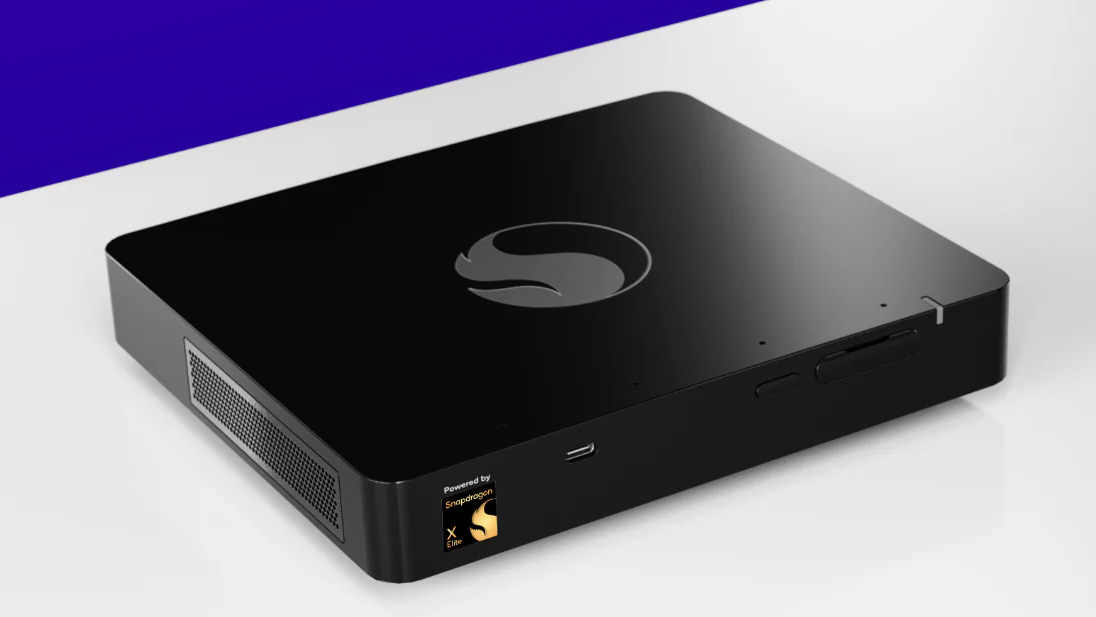I wonder if they know that “pause indefinitely” has a word they can use. That word is “Stop”. Qualcomm has stopped supporting the device. They have stopped producing it. Not “paused indefinitely”.
Corporate executives love using the word pause to allow the possibility for a resume. It also makes it not a failure since it never finishes negatively: it is paused.
It’s word gymnastics.
There’s a word for that too. “Start”. It’s what w you can do after you stop.
Well, there’s also “Restart,” which shows that it was started at some point, but then stopped.

deleted by creator
yeah and my ex-boyfriend “intends” to pay me back the $3500 I loaned him to fix his car.
Right.
deleted by creator
Odd. Seems like a winner form factor for a little Nvidia Shield replacement / TV gaming machine. Wonder if there is an inherent flaw we haven’t heard about yet.
the Developer Kit product comprehensively has not met our usual standards of excellence and so we are reaching out to let you know that unfortunately we have made the decision to pause this product and the support of it, indefinitely.
It sounds like they fucked something up.
If this was the case they could’ve recalled and corrected, ditching everything is strange.
My guess is the silicon had fundamental flaws, and it was cheaper to scrap the project than fix the issues and fix it.
The inherent flaw is Qualcomm actually having to properly support one of their chipsets directly to customers for once, something they’re apparently really bad at. This box has had some pretty bad press already, mostly due to the software being abysmal.
To me it felt like previous Windows on ARM attempts: promised a lot, released with problems (mainly compatibility this time), then quickly forgotten because x86 chips caught up anyway.
See you in 2-3 years!
Definitely had issues on first release, but a lot has improved since then without getting much coverage. Btw I wouldn’t say that x86 has ‘caught up’ especially if your metric is power efficiency, not just raw power. Until we see a realistic RISC-V offering arm will likely remain king in that space.
I always hear power efficiency as an argument that ARM chips are magically better at, but Ryzen AI 300 and Intel Core Ultra 200V series seem to be very competitive with Qualcomm’s offering. It’s hard to compare 1:1 as the same chip in different laptops can be configured very differently in terms of TDP and power curves and the efficiency “sweet spots” aren’t the same for all these different chips. Core Ultra 200V is also awaiting more thorough testing, but it seems to be right up there with the Snapdragon.
I honestly found the Snapdragon X very underwhelming after all that marketing of how much better it was than Apple’s M3 and Intel’s and AMD’s offerings. By the time the Snapdragon was actually available in end-user products, AMD’s and Intel’s competing generations were right around the corner and we’ve also seen a vastly improved M4 chip (although only in an iPad so far, so meh). Add to that the issues that you’ll encounter because while Windows’ x86 to ARM translation layer has certainly improved, it’s nowhere near as seamless as what Apple did.
Just Qualcomm showing their customary hostility to developers.
They’re resentful they had to produce dev kits in the first place, so delayed them until after other companies produced retail products.
has the author saved a misspelling into their autocorrect?

No, it was all painstakingly hand typed on a type writer and then scanned into the computational device using one of those new fangled fax/scanners that the kids are using these days to photocopy their pog slammers to upload on their myspace weblog.
Qualcomm Snapdragon X may achieve better success if they followed Apple’s path (a well rounded dev kit), and makes Linux first class support instead of Windows with the Copilot+ PC which proven is a dumpster fire.
snapdragon could get more success with linux tbh
Yup, I want a snapdragon Framework laptop running Linux. Most of my FOSS stuff should work just fine, and I’m not expecting to play games or anything on it. Give me something with incredible battery life, good hardware reliability, and reasonable performance and I’ll buy it. I’ll pay extra if the keyboard feels nice to type on. I generally like ThinkPads, but the Framework repairability is very appealing.
Excuse my ignorance on arm situation on Windows, but this felt like same situation with third party arm sbc like Orange Pis and rockchip… In Orange Pi 5 and rockship as soon as community develop some stuff on their own, the developer stop providing assistance and pretty much abandon software support and to this day RK3588s (the soc used on OPi 5 and several other sbc) haven’t got Vulkan support meanwhile Raspberry Pi 5 got its VK support 2 weeks after device public release which is shame for rockchip.
I wish Qualcomm competent enough to realise bringing software support boosts the hardware longevity as much as Apple did with their ecosystem which provide both software and hardware supports to make their chips runs at its maximum potential.
A lot of the cheap tablet SoC vendors like Rockchip (whose SoCs end up in low cost SBCs) really only do the bare minimum when it comes to proper linux support. There’s usually next to no effort to upstreaming their patches so oftentimes you’re stuck on their vendor kernel. Luckily for the RK3588(S), Collabora has done a considerable amount of work on supporting the SoC and its peripherals upstream. I run my Orange Pi 5 Plus (RK3588) on a mainline kernel and it works for my needs.
This practice is a lot easier to defend for a low cost SoC compared to something as expensive as a Snapdragon Elite though…
Hey fellow opi 5 owner! iirc some ppl back then managed to run newer ubuntu rk3588 aswell but what makes me quit was the gpu support (Rockchip’s android image have better driver performance and linux neglected which sucks). Also saw that collabora and panfrost stuff but I moved back to x86 mini pc bcuz I need gpu stuff, thought to repurposing them as media server & emulator setup but didn’t worked with linux.
Owned orange pi 5 back then for college project, their NPU really packs a punch but sadly the good story ends there. After finished the project sold mine to friend who need them for computer vision and NN stuffs.
GPU and overall firmware support is always better on x86 systems, so makes sense that you switched to that for your application. Performance is also usually better if you don’t explicitly need low power. In my use case I use the Orange Pi 5 Plus for running an astrophotography rig, so I needed something that was low power, could run Linux easily, had USB 3, reasonable single core performance, and preferably had the possibility of an upgradable A key WiFi card and a full speed NVMe E key slot for storage (preferably PCIe 3.0x4 or better). Having hardware serial ports was a plus too. x86 boxes would’ve been preferable but a lot of the cheaper stuff are older Intel mini PCs which have pretty poor battery life, and the newer power efficient stuff (N100 based) is more expensive and the cheaper ones I found tended to have onboard soldered WiFi cards unfortunately. Accordingly the Orange Pi 5 Plus ended up being my cheapest option that ticked all my boxes. If only software support was as good as x86!
Interesting to hear about the NPU. I work in CV and I’ve wondered how usable the NPU was. How did you integrate deep learning models with it? I presume there’s some conversion from runtime frameworks like ONNX to the NPU’s toolkit, but I’d love to learn more.
I’m also aware that Collabora has gotten the NPU drivers upstreamed, but I don’t know how NPUs are traditionally interfaced with on Linux.
deleted by creator
Didn’t Intel cancel NUC because it was just a tiny niche not worth the effort?
I can’t imagine Qualcomm, who traditionally sells chips to phone makers, has any interest in becoming a vendor of SFF PCs.
Sort of, maybe. Intel will launch new hardware demonstrators as product lines for consumers, with the goal of pushing their OEM customers to create similar product lines i.e. USFF PCs.
They do this with laptops, and a bunch of other stuff. They’d rather not be in the retail hardware business, but they also realize that PC OEMs operate on slim margins, and as such are not the most creative risk takers.
So it’s in Intel’s interest to periodically launch new consumer lines to (hopefully) prove there’s a market to be had, with whatever new product type of they’re launching. Powered by Intel of course.
At least, that’s my understanding of the issue.
I thought the NUC was such a great idea for home servers, I bought one from AMD.
They sold the business to Asus and they are releasing new NUCs
Turns out it was haunted. Gotta just pack it in and call it quits, shit’s haunted.
Try again in November, after spooky month is all done with.











